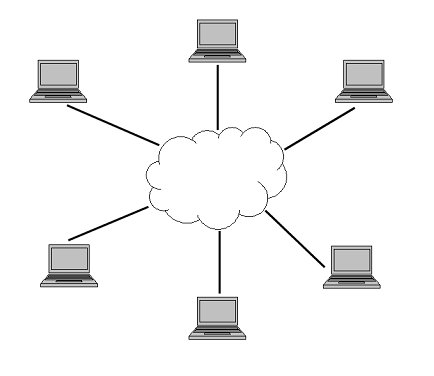SaaS Advantages: Save Time, Save Labor Costs, Lower Risks
Until recently the paradigm has been computing resources are scarce (hence costly): CPU time, storage space, Internet bandwidth. The reality is these old bottlenecks are now cheap and in abundance. Consider Yahoo's free email service gives users unlimited storage space. Hotmail and Gmail similarly offer very large amounts of free storage.
What is truly scarce (and costly) is human labor. What is more costly: having senior staff spend time cleaning out their Outlook inboxes to reclaim hard drive space or simply spending $100 once every few years to add a terabyte of additional storage?
Software as a Service (SaaS) offers companies, particularly small- and medium-sized enterprises, the ability to leverage the modern abundance of computer resources to lower labor costs.
Hub-and-Spoke Advantage

SaaS offers the advantages of a centralized hub-and-spoke model for applications and data management but without the need for an onsite network administrator to install, deploy, and update. A SaaS application can be accessed by any computer with access to the Internet, using browser-resident encryption. There's no need for staff to set up and maintain a costly VPN (virtual private network) for off-site access to your applications and data.
Security
There is no need to worry about the time and cost of backing up your database or employing expensive remote archive sites. SaaS providers take care of it for you.
Having a business continuity plan can be a prerequisite for doing business with some companies. SaaS reduces the burden of having to plan for business continuity and updating your plan.
Security Updates
So many traditional applications these days are prompting you to download the latest security update or bug fix, it's becoming time consuming, especially if a reboot is required. It's becoming so time consuming that many users put off updating. The risks inherent in putting off security updates don't need to be illustrated.

With SaaS, there is no need to install local software or worry about downloading security updates. You'll never be prompted to download a patch and waste time rebooting your system. There is no need to upgrade hardware to handle the latest operating system demands.
License Compliance
Ensuring each computer in the office is running legal, licensed software copies can be a time consuming process. It is so time consuming, many smaller firms simply don't survey employee compliance. They do this at their peril as it takes only one disgruntled former employee to make a call to the appropriate body (like the Software & Information Industry Association) to begin an audit that may result in a large fine. The SaaS model ensures you never have to worry about compliance. SaaS applications prevent users from sharing a login account simultaneously. If the user is logged in and using the SaaS application, he/she is in compliance.
With SaaS you can never lose or misplace install CDs. Expensive original CDs will never wander out the door in the backpack of your summer intern. You can never lose software registration keys. Losing packaged software CDs or registration keys can mean spending considerable amounts of time trying verify with the vendor you own a legal copy.
If you forget your password on a SaaS account, you can quickly get a replacement password emailed to a trusted email account.
Lower Adoption Risks
Few software packages like CRM or ERP software are perfectly tailored for your office environment. They require, at times, workers to modify behavior and work culture to match default assumptions within the system. While many packaged software applications come with free 30-day trials, 30 days can still be too short of a time to determine if worker behavior can fully adapt to the new system. Spending $10,000 on a package to find out after six months employees just can't adequately adapt can be costly. SaaS, with its small monthly fees, means a much smaller investment you're willing to walk away from in the event of the above described scenario. As well, with SaaS you can more slowly roll out implementation, further reducing your risks.
Deploy the Software Faster
Installing software takes time. If you need to install client software on individual work stations, not only does this involve time resources from your IT personnel but it frequently requires an employee to be idled while the client is installed on his/her machine. SaaS is instantly available from a running browser.
Add Mobility Quickly
Many smaller enterprises are not set up for remote access of their resident servers, data, and software. Adding remote access can mean an investment in a firewall. SaaS gives you true mobility with zero hardware and software investment.
Conclusion
SaaS is an established model with a long history of providing computing services to the most number of users cost effectively. In times past, SaaS solved the problems of high hardware and storage costs. SaaS's modern implementation lowers time and labor costs using abundant, ubiquitous, and inexpensive hardware, storage, and bandwidth.
